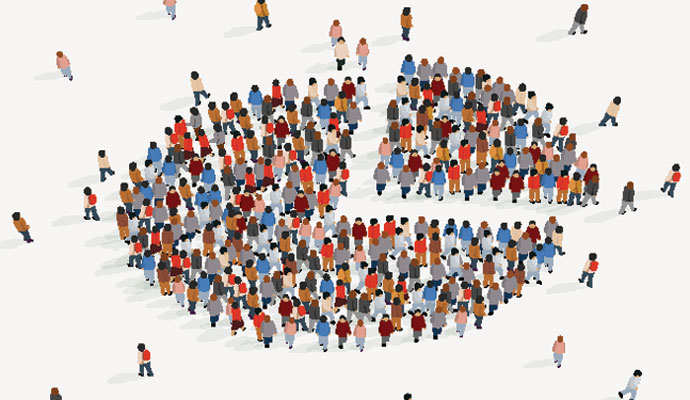Supporting Equitable Vaccine Distribution with EHR Data
Leaders at Jefferson Health are leveraging EHR data to develop strategies around equitable vaccine distribution.

Source: Getty Images
- With the broadening availability of COVID-19 vaccines, it seems the US is finally beginning to see the light at the end of the pandemic-enveloped tunnel. After more than a year of uncertainty and unease, the vaccines represent the opportunity to return to some semblance of normalcy.
However, this optimism has been clouded by concerns about equitable vaccine distribution and access. The virus’s disproportionate impact on racial and ethnic minorities, as well as socioeconomically disadvantaged populations, has established a need for strategies around vaccine distribution.
At Jefferson Health, a system with 14 hospitals throughout greater Philadelphia, leaders took action to meet this need.

“Being a very large healthcare organization, we had about 30,000 employees that needed to be vaccinated first. So, we had a little bit of lead time between when the vaccines were approved and when we were able to start vaccinating patients,” Bracken Babula, MD, clinical assistant professor at Jefferson Health, told HealthITAnalytics.
“There was a lot of work that went into vaccinating our employees before we started vaccinating patients. But in our initial conversations about vaccinating patients, one of the top priorities was the equitable distribution of the vaccine.”
READ MORE: AI, EHR Data Can Help Predict COVID-19 Outcomes, Mortality
Given the higher rates of COVID-19 infection and the higher death rates among many of their patient groups, the health system set out to design a distribution plan that would reduce the impact of these disparities.
“It was important for us to try to distribute our vaccine in a way that at least mirrored our overall population for Jefferson Health – even if that kind of equal distribution was not actually equitable distribution,” Babula said.
“Because you could argue that if our black population is twice as likely to get COVID, then that we should really be prioritizing them even more to get the vaccine.”
The team started with this strategy on week one. Jefferson Health used Epic MyChart-based pre-registration signup, where patients could indicate if they were interested in vaccination, as well as if they had comorbid conditions or other factors that would make them qualify for the vaccine.
“As those pre-registrations came in, depending on how many slots we had available, we would send out invitations,” said Babula.
READ MORE: Combining Genomic, EHR Data Could Improve Epilepsy Treatment
“So, say there were 500 slots available for the coming week, we might send out a thousand invitations to that. And we would specifically make sure that those invitations went out at a ratio that was, at least initially, equivalent to the race and ethnicity breakdown of our patients.”
Leaders also understood that they could have to send out additional invitations or pre-registrations for Jefferson Health’s black population, because of the vaccine hesitancy or transportation issues from some areas of the city that had high rates of COVID-19.
“We were looking both at the race and ethnicity breakdown, and even starting week one, we started looking at the ZIP code breakdown by social determinants. We looked at the Social Vulnerability Index and the Community Needs Index – two different kind of metrics that we can use to track that,” Babula explained.
The most important part of this process was the ability to identify issues and adjust the strategy as needed.
“When our week one invitations went out based on this pre-registration, we realized that something like 85 percent of our first week one invitations went out to white patients. That was really the first red flag to us. We needed to change that immediately. And we did. Throughout this process, we’ve changed our approach on a week-by-week basis or sometimes a day-by-day basis or an hour-by-hour basis, based on how things changed,” said Babula.
READ MORE: Machine Learning Tracks EHR Data to Predict Disease Risk
“Initially, we saw this massive demand. So, we were able to calibrate our invitations to be equitable because of that massive demand. Two or three months later, demand is dropping. Now we have to prioritize our outreach efforts. We have to prioritize the work that our primary care providers do.”
That means encouraging providers to have these conversations with their patients, Babula stated.
“And so, in addition to sending out these bulk invitations in the thousands, we're also talking to our individual providers and saying, ‘Please make sure to encourage every patient you see to get their COVID vaccine, and have a conversation with them,’” he said.
“We use alerts in the EHR to encourage the provider to have that conversation. The important thing is to make sure you're willing to admit that maybe your first go wasn't the best, and willing to make the changes to correct it.”
In designing these strategies, EHR data played a critical role in helping Jefferson Health identify which patient populations to target.
“Say you're the city of Philadelphia and you're just using a signup form of some sort. You have to think ahead on that signup form of exactly what kind of data you want to collect in order to make your distribution equitable.”
“And depending on the signup form that you used – some of them initially collected race and ethnicity, some of them didn't – eventually everyone was in agreement that race and ethnicity needed to be collected, at least by the time someone was vaccinated. But if you don't have that data ahead of time, it's hard to tailor your invitations in a way to make sure you're reaching your populations.”
With the EHR, not only did leaders know race and ethnicity and where a patient lives, but they also had specific social determinants recorded for them.
“So, in addition to the preregistration that came in through MyChart, the first group that we prioritized our outreach to was transplant patients. And we specifically used data points in the EHR that helped us identify those transplant patients,” said Babula.
This process has also highlighted new opportunities and approaches for Jefferson Health to address population health in other areas.
“In Epic and MyChart, we were able to allow an individual to self-schedule once an order has been placed for the vaccine. That has been hugely successful, because even if I place the order at six o'clock at night, my patient can self-schedule for a vaccine at nine o'clock the next morning,” Babula concluded.
“That kind of functionality should be used for mammograms, colonoscopies, going and getting your hemoglobin A1c, and so many other population health metrics that we need to address. From an IT perspective, this project has been really eye-opening in terms of what else we can do for population health. And I hope that other institutions are seeing the same.”
